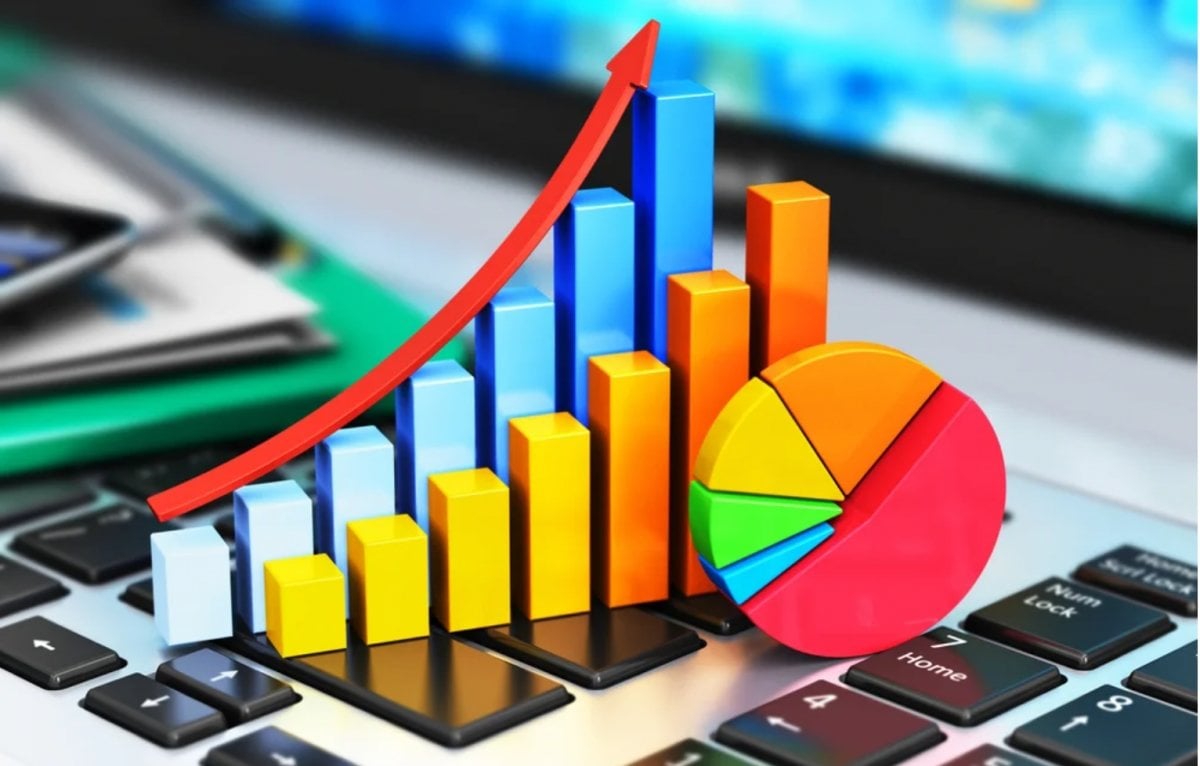Statistics influence nearly everything. That is, the information and context derived from statistical analysis help to shape important decisions that have local, national, and global impacts. For instance, statistics play an important role in the cost of your favorite ingredients at the grocery store and the economic policies of the world’s largest economies.
The many fields of statistics incorporate research and analysis far outside of financial and economic matters, too. That is, professionals in medicine, the social sciences, sports, and many other areas also depend on statistics to develop objective and reliable guidance.
Let’s take a closer look at the broad importance of statistics. Along the way, you’ll see how seizing an opportunity to learn statistics, earn a related degree—such as the Online Master of Science in Applied Statistics—and build a career in this field can empower you to make an impact.
Why Are Statistics Important?
Regardless of the industry, market, economic sector, or any other distinction, statistics help individuals and groups solve problems and seize opportunities. This discipline can offer insight and support in any situation where relevant data can be collected, analyzed, interpreted, and presented to work toward an effective resolution. Thus, the applications are nearly limitless.
Limitations of Making Decisions by Gut Feel
It's true that initial success may occur when leaders follow their gut and rely on intuition and past history to make key decisions. However, relying on feeling and the "This is How We've Always Done It" attitude often leads to overconfidence in evidence-free decision-making that may not serve a organization well in the face of new opportunities and challenges.
Entrenchment in familiar mindsets and modes of operation is natural, though. Most humans are wired to stick to what is familiar, especially when it has worked well in the past. This tendency can become a hindrance to growth, and even survival, when the comfort of familiarity overrides the urge to adjust and change based on available data.
Daniel Kahneman, a Nobel prize winner in economics for his work on human judgment and decision-making, has recognized the problems of relying on one's gut. He has concluded that humans essentially make decisions in two ways: a fast, intuitive method, and a slower, reasoning and evidence-based method.
Kahneman’s research insists that the first method, while more comfortable and often faster, is also more prone to error. The second method, which takes more time, is generally more reliable because it depends on clearer reasoning and makes space for evidence, including statistics. He ultimately concludes that although both processes have value, overly relying on intuition invites a higher risk of error, a conclusion that reinforces the importance of statistics in decision-making.
The Benefits of Statistics to Evidence-Based Decision Making
Evidence is incredibly valuable when using a deliberate process to make important decisions. You can look at the application of statistics to decision-making as a safety net. If the data and analysis support the same conclusions as those reached by intuition, it’s a positive outcome for everyone involved. If the results of statistical modeling, forecasting, and similar activities support an opposite conclusion, then there is clear evidence that gives priority to the response driven by analysis.
Accessing and utilizing statistics is particularly critical now. We're living in a time when more data than ever is being produced. Business and organizational leaders are tasked with making one decision after another in a world where the volume of information is overwhelming.
Consider some of the facts about data:
- There are 44 zettabytes (44,000,000,000,000,000,000,000 bytes) of digital data traveling the internet.
- 90% of the world’s existing data was created in just the last two years.
- Humans worldwide are adding 2.5 quintillion bytes of new data daily.
- Collectively, we will generate 463 exabytes of data by 2025.
It is obvious, then, that information overload can be a problem for leaders and executives aiming to make more informed, evidence-based decisions. But through statistics, never-ending piles of data are culled and converted into usable information and actionable steps.

What are Some Examples of Statistics Creating Better Outcomes in the Modern World?
The following examples can help you better understand not only the value of statistics in a variety of applications, but also the real-world results that can stem from consistent and strong analysis.
Statistics in Institutions and Organizations
Many large organizations and institutions use statistics to collect and analyze data and make more informed decisions. Below is just a sample of these.
Government
Applying statistics in the real world extends to every aspect of government in countries around the world. The United Nations Statistics Division describes the role of official statistics as an “indispensable element in the information system of a democratic society.”
For instance, politicians and campaign managers use statistics to target specific voter demographics, gauge rates of constituent approval, and predict elections. Additionally, law enforcement agencies track data about fraud and crime that is then used to evaluate the effectiveness of strategies and tactics. Government statistics also affect daily life in many less obvious ways, such as in economic numbers, Federal science research, and the collection and analysis of educational data.
The US Census
The US Census plays a key role in determining distributing government funds to states and municipalities, defining legislative districts, and addressing other vital matters. Statisticians, data scientists, and professionals in similar positions are indispensable in effectively completing this process:
- They ensure data-gathering methods are appropriate and accurate;
- Then, they use statistical models and a variety of related tools to parse through the large volumes of data;
- Finally, they reach the data-backed conclusions that influence major decisions by the federal government and the lives of people across the country.
Law
Statistics often inform the development of legislation and may also guide in the interpretation of laws. Statisticians may provide expert testimony to court cases involving details such as salary discrepancies, DNA testing, disease clusters, and consumer surveys. Statistical organizations serving state and federal courts synthesize information that serves to guide policy and procedural matters.
Healthcare
Statisticians participate widely in pharmacology, being involved with the discovery, testing, approval, and marketing of a drug. They may also work in public health for government agencies, where they help to educate leaders on community health matters and to develop preventative treatments and control. Additionally, statisticians often take on roles in epidemiology, where they help monitor and report on health-related data.
In fact, for the World Health Organization, statistical data is considered a “core WHO activity” essential for advocacy and delivery of health initiatives.
Professional Sports
The Oakland Athletics professional baseball team's use of statistics to improve performance was put into the spotlight by the book and subsequent film Moneyball. These works detailed how management focused on specific player statistics to identify valuable prospects and then sign them to contracts. The team couldn’t match the budgets of more wealthy teams for players, so it decided to focus on advanced analysis and related research as a path to bringing effective contributors onto its roster.
The team continues to use this approach more than 20 years after first implementing it, as Sports Illustrated explains. Now, though, the organization’s statisticians and leaders must keep adjusting—finding new metrics that indicate player value—as other professional baseball teams have also implemented similar systems.
Finance
Applications of statistics affect finance at many levels. Banks use statistics to lower risk in lending operations, analyze activity in the financial market, and predict the impact of economic crises. Investors also use stats to understand the risk and potential of certain stocks, which helps them make informed investing decisions.

Statistics in Everyday Life
Although many of the most popular examples of statistics in action derive from large businesses and organizations, the truth is that statistics have a major impact on our daily lives. Individuals make plenty of personal decisions based on data collection and analysis. And many other choices influenced by statistics affect those same people.
Weather and Forecasting
Advance warning about inclement weather helps people stay safe and comfortable because they better understand potential risks and weather patterns. In fact, the American Statistical Association says data collection and subsequent analysis have influenced weather forecasting as far back as the mid-19th century!
Digital Marketing
Applied statistics is a driving force in transforming contemporary marketing approaches. The advent of “big data” means that companies are collecting phenomenal amounts of information from consumers. Proactive companies then utilize this information to predict sales, glean customer interests, and analyze the effectiveness of marketing initiatives. Applying statistics in digital marketing provides a highly targeted, data-driven strategy.
Furthermore, advertisers in the form of paid search managers monitor ad campaigns based on key performance indicator targets and baselines, as well as analyze data to continually optimize a campaign’s performance. SEO specialists guide companies in understanding how to read and interpret website analytics.
Social Media Analytics
The rise of social media has created an environment where huge numbers of people and organizations are connected in a complex technological framework. In the Netflix film The Social Dilemma, statistics experts share what goes on behind social media screens. Everything users are doing online is “being watched,” the documentary explains. That is, social media managers monitor organic and paid traffic to analyze data to grow followers, increase engagement, and drive conversions. Companies use the data for microtargeting, measuring trends, and watching competitors.
Individual and Family Budgets
On the personal level, a simple household budget can be an example of statistics in action. When a budget incorporates a calculated average of monthly expenses and income, either in total or for the many subcategories included in these documents, statistical concepts play a foundational role in calculating those figures.
Statistics can also provide valuable information even if an individual doesn’t conduct the analysis themselves. Reviewing analyses, such as the Motley Fool’s overview of US consumer expenditure data, for example, can provide context around outliers and other concerns within a personal budget.
What are the Goals of Learning Applied Statistics?
When you learn statistics, you will build knowledge of key concepts, tools, and methods that support accurate and effective analysis. However, applied statistics emphasizes practical applications and focuses on real-world problems and resolutions for them. Although it includes pure theory and math, it does not center on them.
Applied statistics, in short, is about extracting valuable insights from data, which is both a science and an art. The concepts and the data itself are objective, but decisions around how to model data and which results to focus on is a more subjective process. When you earn a Master of Science in Applied Statistics, you will develop practical competence in both the art and science of data analysis.
More specifically, you can focus on these areas of study in an advanced degree in applied statistics:
- Statistical methods, incorporating probability models, parameter estimation, and hypothesis testing
- Probability and statistical inference, incorporating probability laws, random variables, joint distributions, and the central limit theorem
- Computational statistics, incorporating the simulation of random variables from probability distributions and permutation tests
This powerful combination of knowledge and abilities will not only prepare you to understand how statistics affects so many aspects of people's lives, but also equip you to pursue many professional paths related to statistical analysis for businesses, nonprofit groups, and government organizations.
Earn Your Master's Degree in Applied Statistics at MTU.
Statistics are important because they can be applied to nearly everything, from your personal life to critical and complex decisions made by large companies and national governments. When you earn a Master of Science in Applied Statistics, you can develop the talents needed to both reliably manage and conduct analysis, as well as effectively communicate results across an organization.
